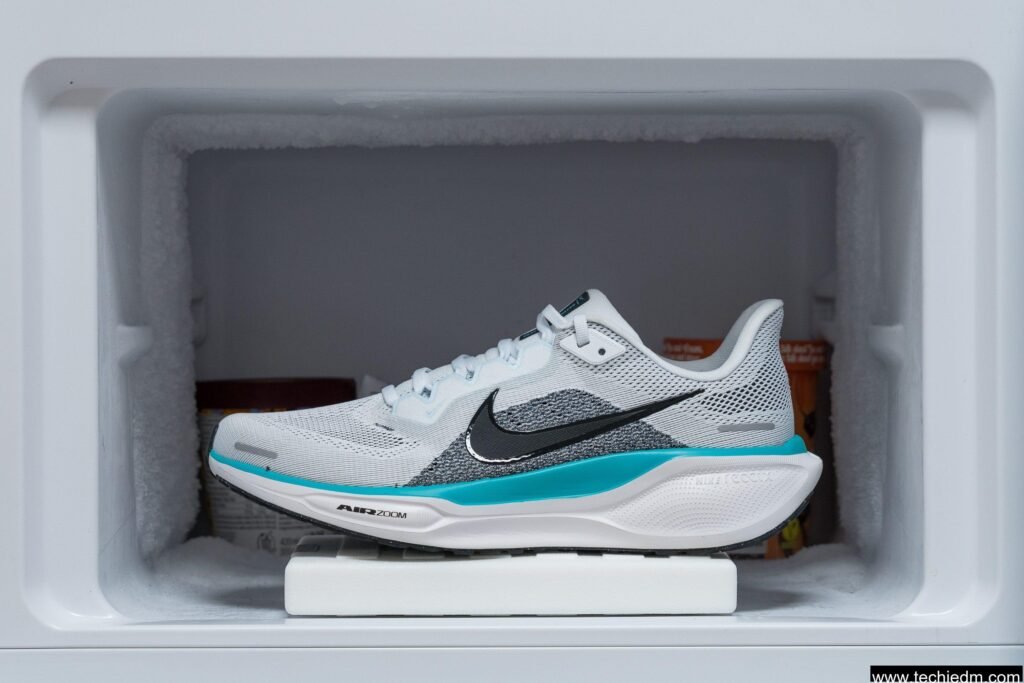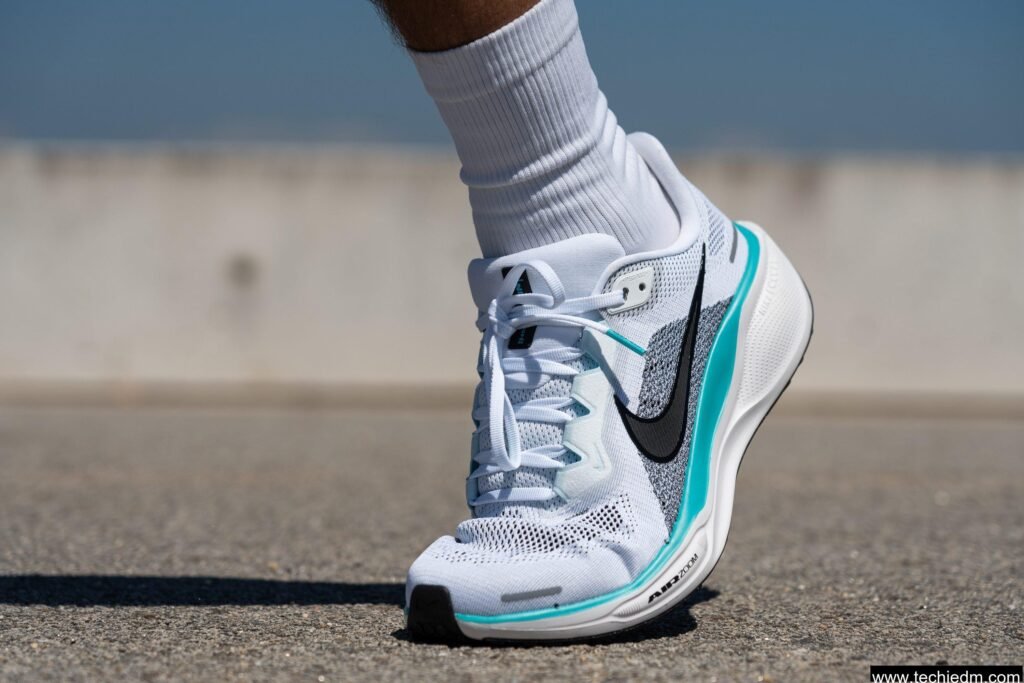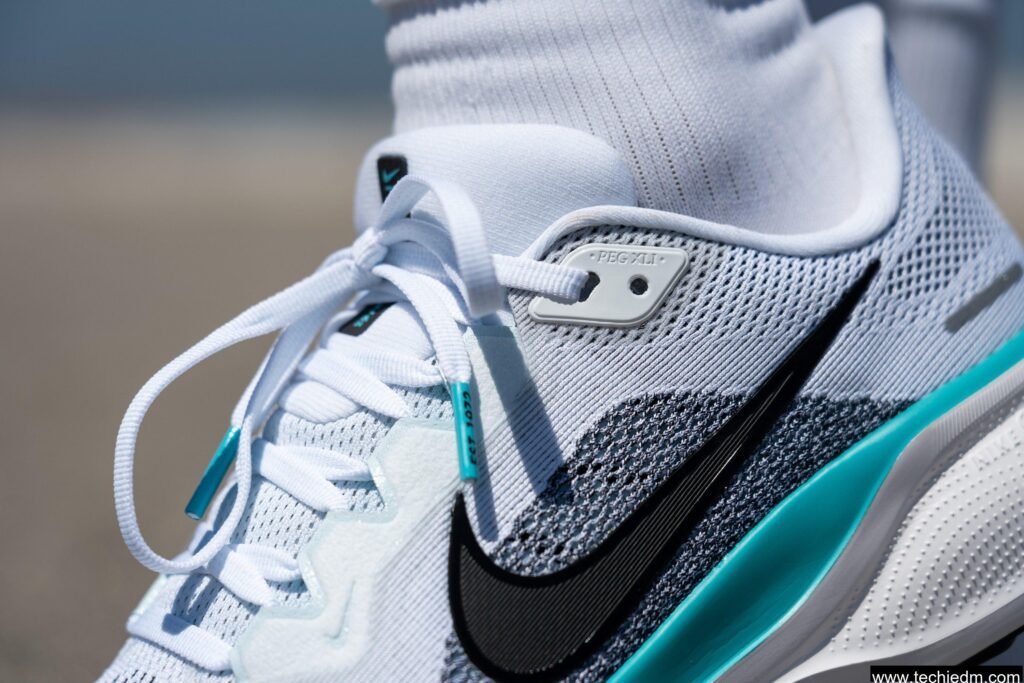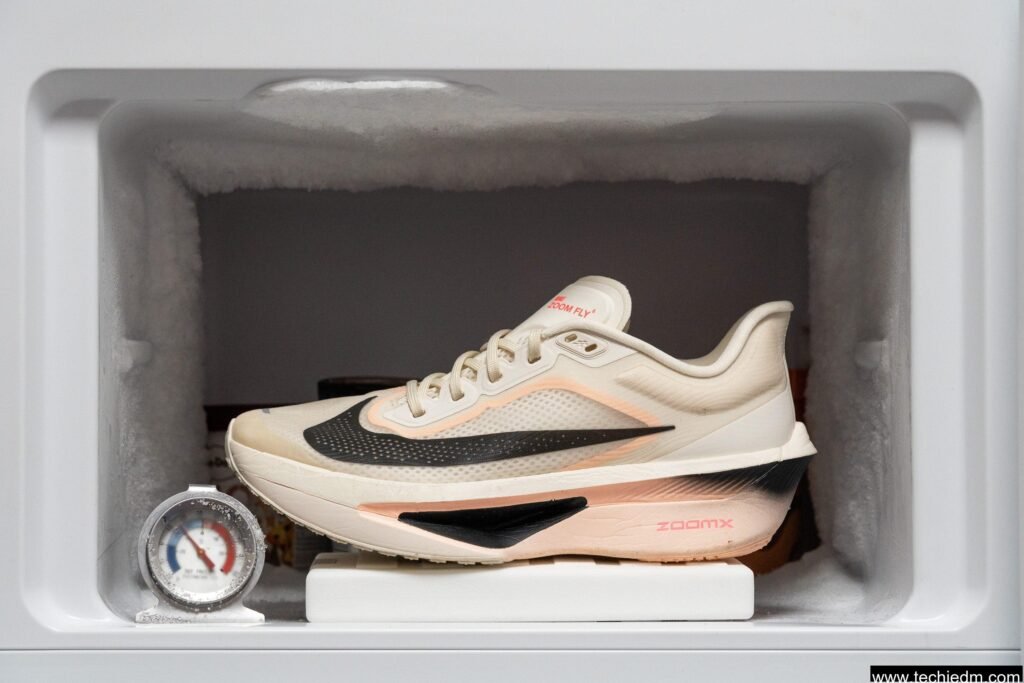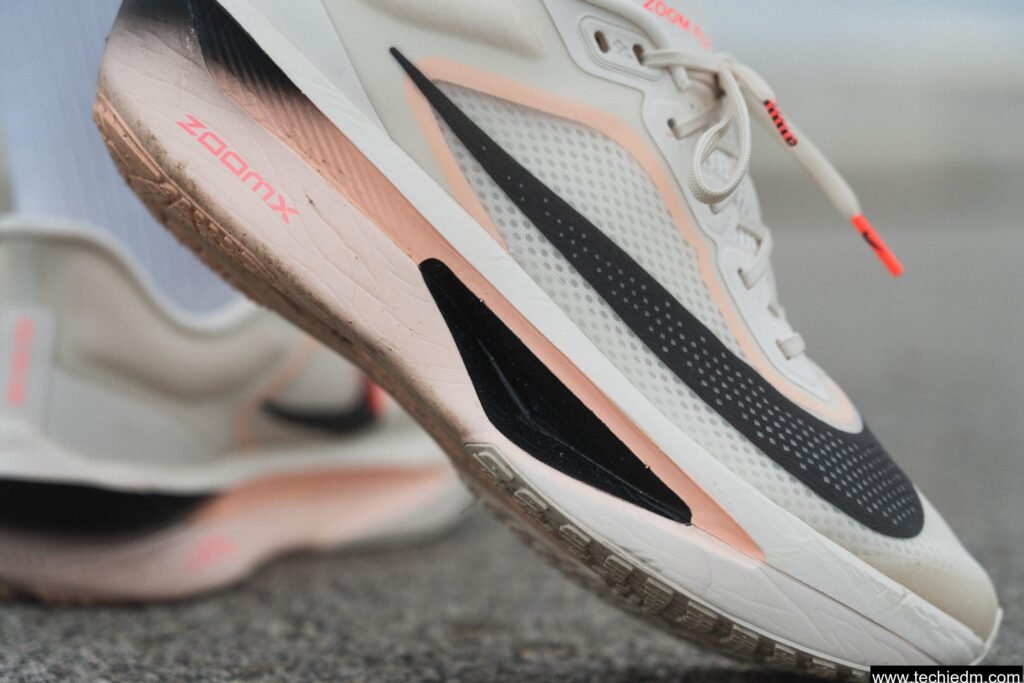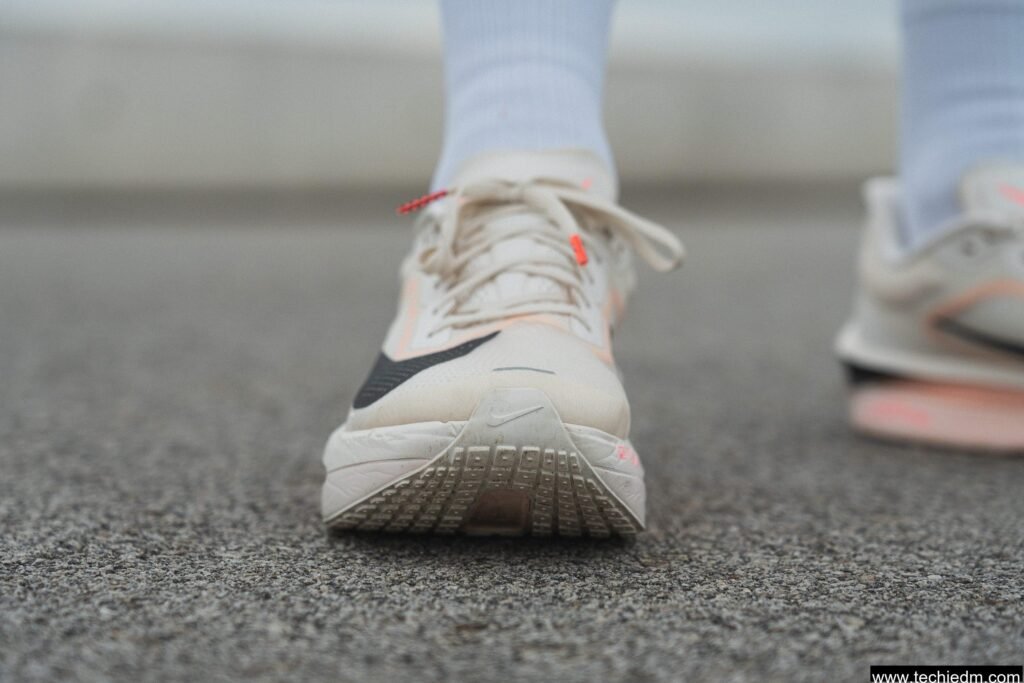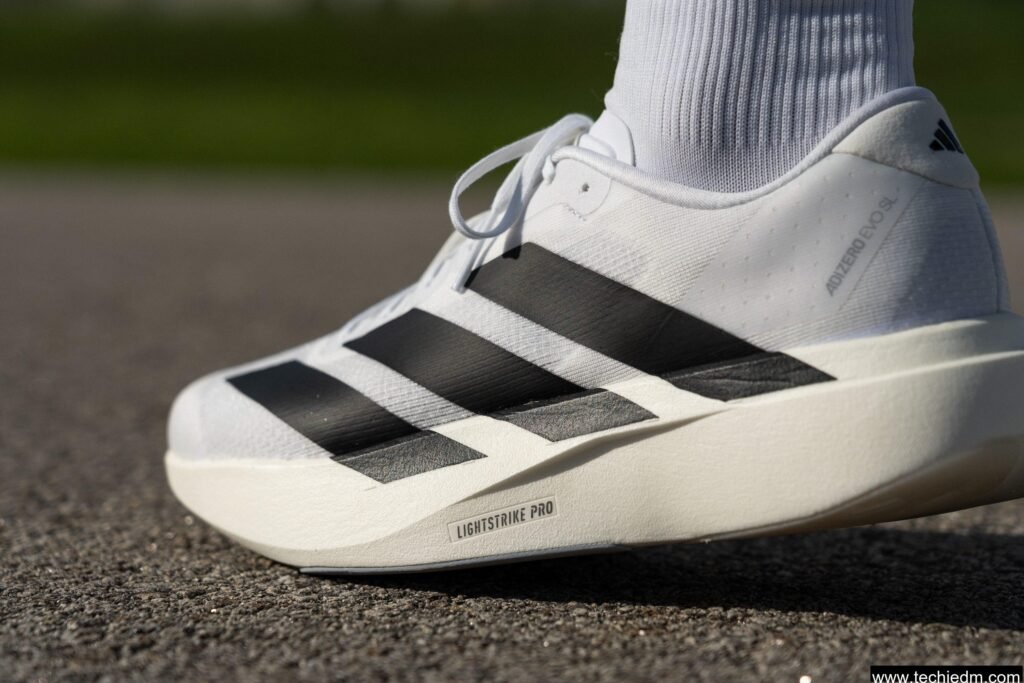
Introduction
It was a rainy Tuesday morning when the Adidas Adizero EVO SL arrived at my doorstep. The box was unassuming, but what lay inside was anything but. Light as air, sleek as a scalpel, and feather-soft underfoot, this shoe had been hyped as a disruptive blend of elite materials at a mid-range price point. Naturally, I was skeptical.
So, I did what any obsessive runner would do: I laced up, hopped on my treadmill, and put the Adizero EVO SL through a series of torturous sessions. Slow jogs. Hard intervals. Long slogs. Three weeks, nearly 100 miles, and a lot of sweat later, I finally feel qualified to tell you what this shoe is really about.
The Setup: My Treadmill & Training Environment
My testing ground was a NordicTrack T 8.5 S treadmill, housed in my garage gym. The ambient temperature ranged from 60°F to 72°F, and I alternated between early morning and post-dinner sessions to see how the shoe performed under different conditions.
I wore thin performance socks for consistency, and I tested the shoes across three specific types of runs:
- Slow recovery jogs (10:00-11:00 min/mile)
- Interval sprints (6:00-7:00 min/mile with 400m repeats)
- Long treadmill runs (7–12 miles at 8:30–9:30 min/mile)
Each session was logged meticulously, and I paid close attention to how the shoe behaved across metrics like comfort, grip, bounce, breathability, and fatigue.
First Impressions
Out of the box, the EVO SL is shockingly light. At just 7.9 oz (223g), it felt like holding a racing flat, not a daily trainer. The upper is a translucent mesh that looks futuristic but feels a bit plasticky to the touch. The heel is narrow, the toebox slightly tapered, and the tongue is… well, basically a piece of paper.
Still, the full-length Lightstrike Pro midsole and Continental outsole had me curious. This is the same foam found in Adidas’ flagship racing shoes, yet here it was in a $150 model. Wild.
Slow Jog Days: Breathability and Flex Shine
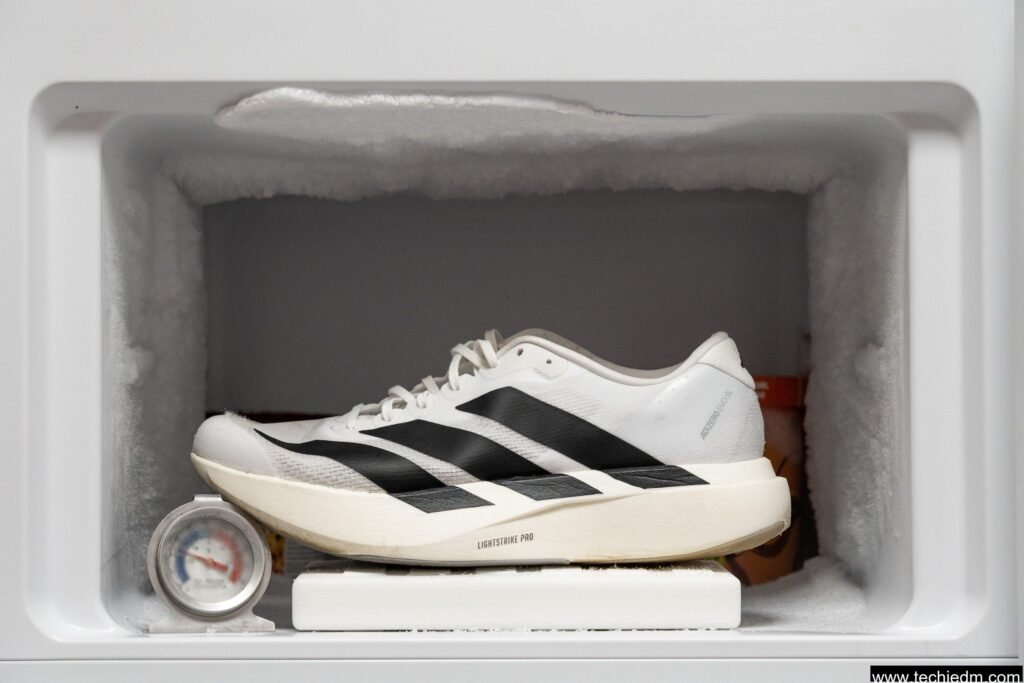
Let’s start with the recovery jogs. I do these at a relaxed pace, focusing on form and letting my heart rate hover in Zone 1. Right away, the EVO SL made a strong first impression.
The breathability is off the charts. My feet stayed cool and dry, even when I was wearing these in the middle of a humid garage session. The mesh upper is so porous you could practically see your socks through it. I’d rate it a solid 5/5 for breathability.
The ride was soft but not mushy. The Lightstrike Pro foam offered a distinctly springy feel even at slower paces. Unlike some soft foams that collapse under slower speeds, this one retained its bounce without feeling unstable.
The toe box was snug but not uncomfortable. If you have wide feet, you might want to size up or look elsewhere. I felt the taper near the pinky toe, but it wasn’t a dealbreaker.
Interval Sprints: Grip, Bounce, and Nitpicks
Now we were getting into the spicy stuff. I loaded up a classic 8x400m session with 200m jog recoveries.
The grip on the treadmill belt was phenomenal. This probably comes down to the Continental rubber used on the outsole. Even at speeds upwards of 10 mph, I felt firmly planted.
Responsiveness was another big win. The foam really came alive here. Each push-off felt like it had a little extra snap, and though the shoe lacks a carbon plate, the embedded plastic shank gave just enough structure to help with propulsion.
However, the tongue became an issue. It’s short, thin, and non-gusseted, which meant it slid around and occasionally bunched up. During one interval, I had to pause to readjust it. The laces were also annoying, thin, stretchy, and hard to get tight without creating pressure points. Adidas, please fix this.
Long Runs: Comfort, Durability, and Fatigue Factor
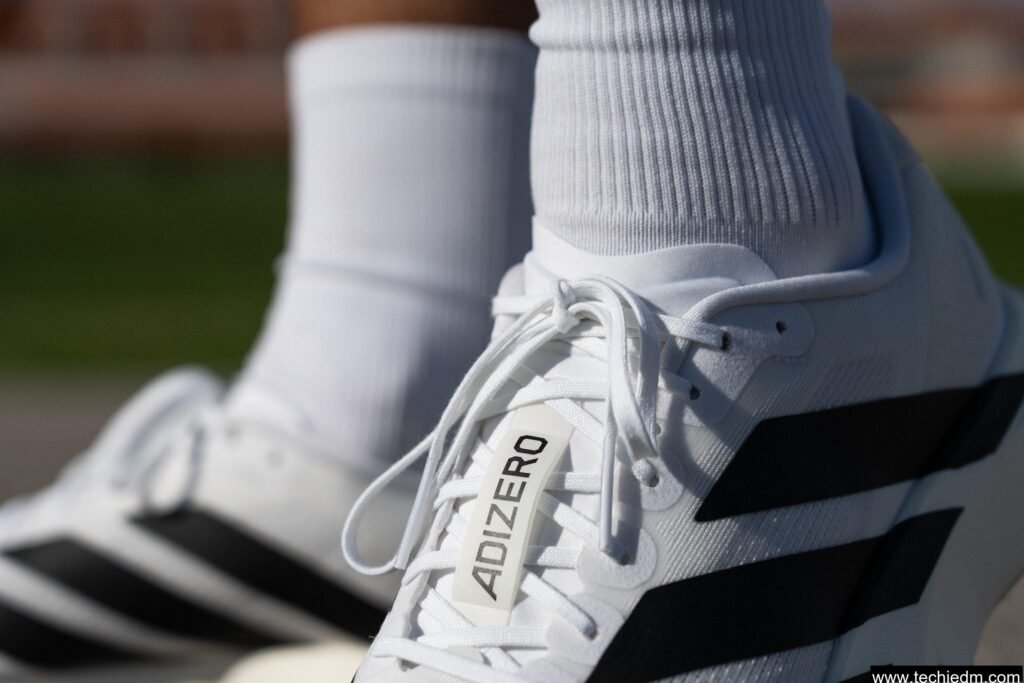
For the long runs, I did two sessions of 8 and 12 miles respectively. I alternated between steady-state paces and slight inclines to simulate outdoor effort.
What stood out most was how consistent the shoe felt. The Lightstrike Pro foam didn’t bottom out, and the bounce remained intact even after an hour of running. It felt like I could keep going.
The upper, while breathable, started to show its limitations. It’s so minimal that I began to feel hotspots near the eyelets around mile 10. Not painful, just a reminder that this isn’t a plush cruiser.
Still, there was no heel slippage, and the midfoot lockdown remained solid throughout. The shoe drained sweat well, and the outsole showed zero signs of wear, a testament to its durability.
Specs Table
| Feature | Specification |
|---|---|
| Weight | 7.9 oz / 223g |
| Drop | 6.5 mm (lab: 8.0 mm) |
| Midsole | 100% Lightstrike Pro |
| Outsole | Continental Rubber |
| Upper | Engineered mesh |
| Grip | Excellent |
| Waterproofing | No |
| Breathability | 5/5 |
| Sole Type | Neutral, rocker geometry |
| Arch Support | Neutral |
| Durability (Upper) | Low (1/5) |
| Durability (Outsole) | High (0.6 mm wear after testing) |
| Flexibility | 9.8N (very flexible) |
| Insole | Removable, 2.4 mm thin |
Final Thoughts
The Adidas Adizero EVO SL is an anomaly, and I mean that in the best way. It’s a shoe that fuses elite racing components with a trainer’s durability and pricing. It’s fun, fast, and versatile.
While the tongue and laces need improvement, and the upper sacrifices plushness for speed, these are minor complaints in the grand scheme of what you’re getting for $150.
This shoe shines on the treadmill. It grips. It breathes. It flies. And if you don’t need a carbon plate or max cushion, it might just be the best value-performance shoe of the year.
FAQ
Q: Is the Adidas Adizero EVO SL good for treadmill running?
A: Absolutely. Its grip, breathability, and responsive foam make it ideal for treadmill use.
Q: Can I use this shoe for daily training?
A: Yes, though the minimal upper might not offer enough comfort for everyone. It excels at tempo runs and medium-long distances.
Q: Is it true to size?
A: Yes, it fits true to size. However, the toebox is tapered, so if you have wide feet, consider sizing up.
Q: How durable is the outsole?
A: Surprisingly durable. Despite the thin rubber, the Continental outsole only showed 0.6mm of wear after nearly 100 miles.
Q: Is the shoe suitable for heel strikers?
A: It can work for mild heel strikers thanks to a subtle heel bevel, but aggressive heel strikers may want more cushioning at the rear.
Q: Does it have a carbon plate?
A: No, but it includes a plastic shank that adds some structure and propulsion.
Q: Can I race in this shoe?
A: Yes. It’s more than capable of handling races up to the marathon distance if you prefer a plate-free ride.
Q: Is it good for walking or casual wear?
A: It works for walking due to its flexibility and light weight, but the minimal upper might not be ideal for long walks.
Q: Is the insole removable?
A: Yes, but the shoe has limited space inside, so thicker aftermarket insoles may not fit comfortably.
Q: Does it perform well in cold weather?
A: Yes. The foam retains its properties even in colder temperatures, with only a 13% change in softness after freezing.
